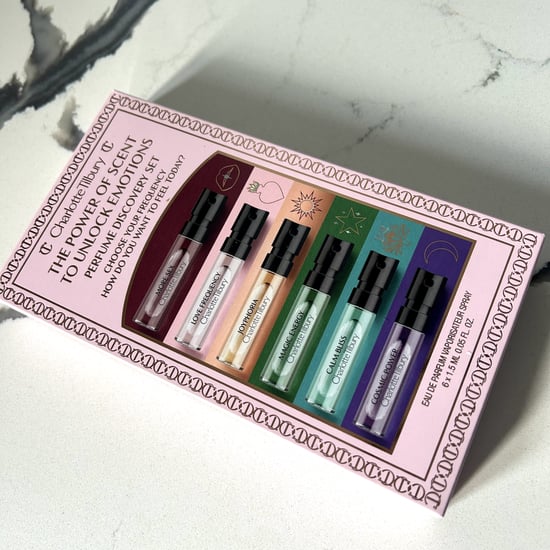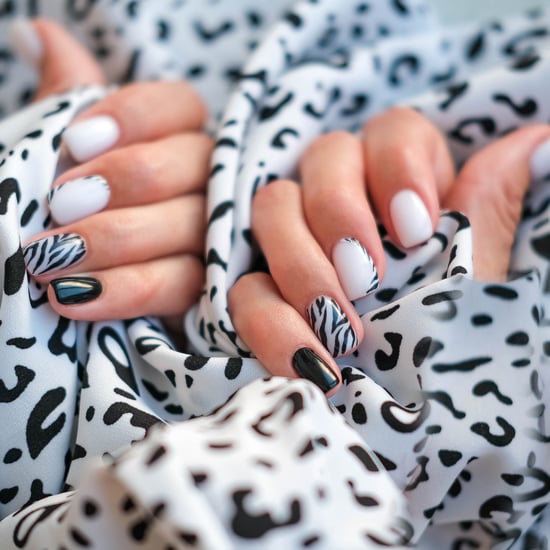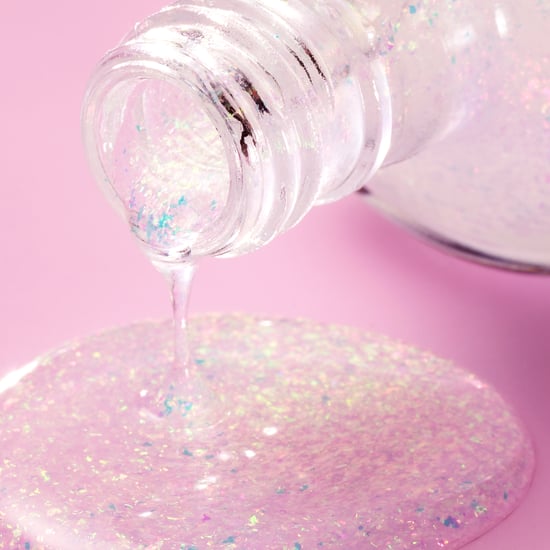Magic Ink Tattoos, Activated by Light, Are the Future
Light-Activated "Magic Ink" Is the Future of Tattooing
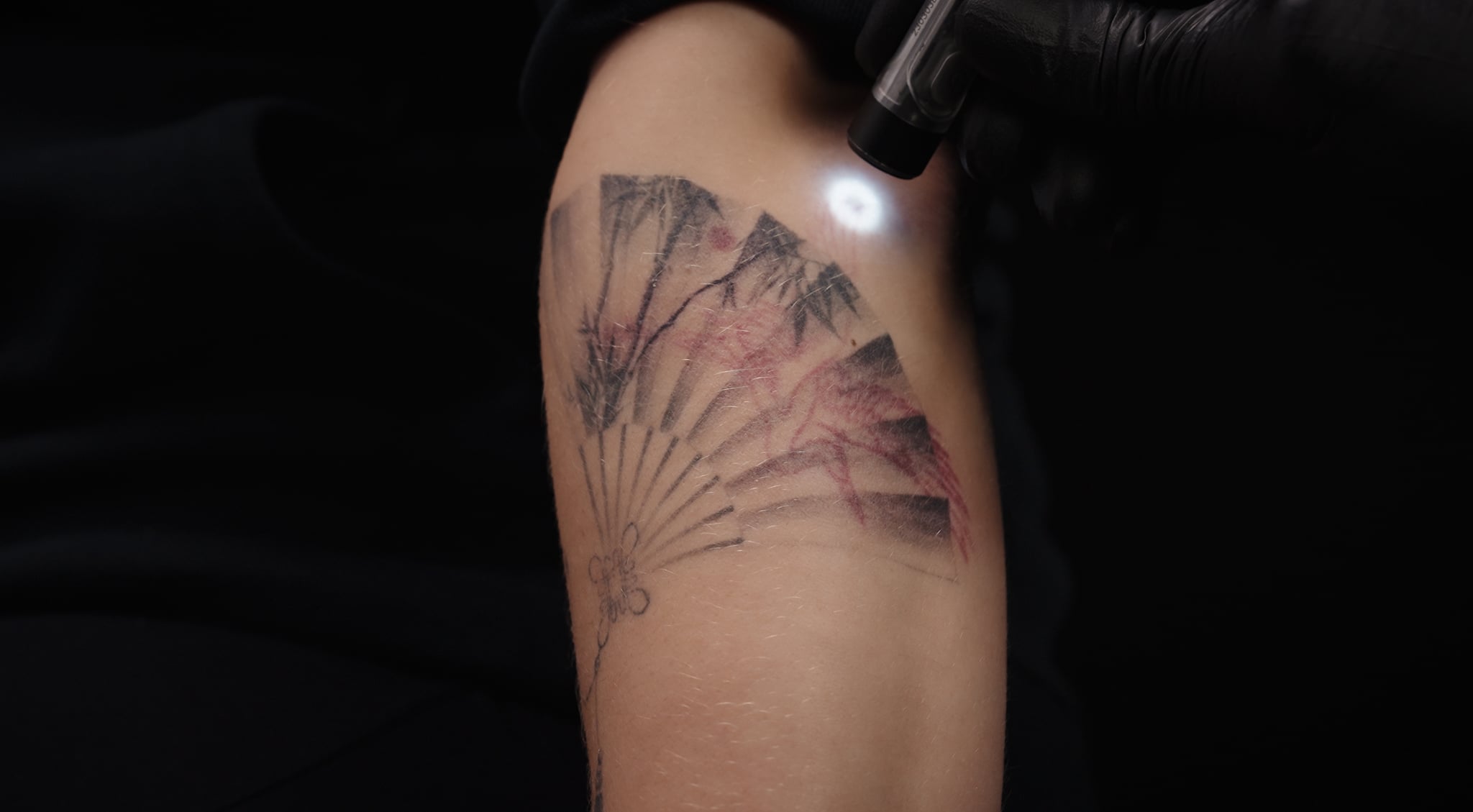
Tattoos are forever, right? Well, maybe not like we once thought. You can get them removed (though laser tattoo removal is nothing to scoff at), get an ephemeral tattoo that fades in a few years, or get a "Magic Ink" tattoo and simply turn it off whenever your heart desires. The new innovation in tattooing from celebrity artist Keith "Bang Bang" McCurdy allows you to activate and deactivate your tattoo ink with the flick of a light.
It sounds far-fetched and hard to believe (even after you see it with your own eyes), but it's real. To put it plainly, "Magic Ink is essentially a tattoo that you can turn on or off using light," Bang tells POPSUGAR. He's tattooed the likes of Rihanna, Justin Bieber, Cara Delevingne, and many more stars, but his passion in creating goes further than that. "I've always said my inspiration fuels my motivation," Bang tells POPSUGAR. The idea for a disappearing tattoo, or Magic Ink, came to him when he asked himself: "What's the future of tattooing?" This led him to wonder, "What if your tattoo could change in your skin?" And with that, he began working on his next project.
To learn more about this tattoo ink of the future, keep reading.
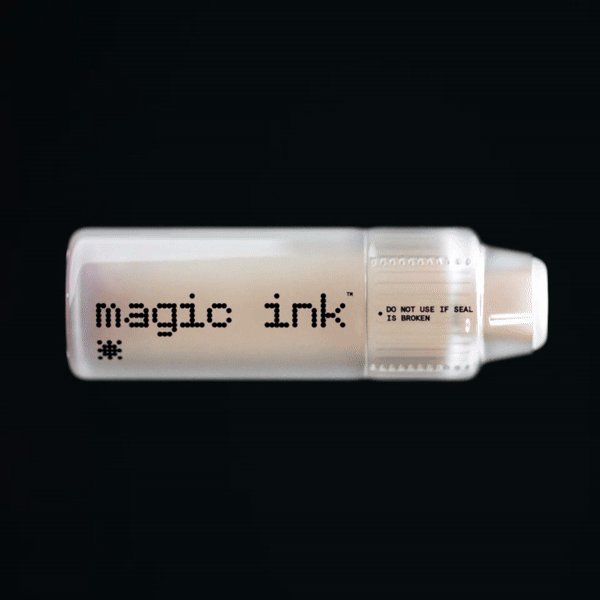
The Inspiration and Creation of Magic Ink
Innovating in the body-art space is a driving force for Bang, and "tattoo inks have always been one of those things on my board," he says. However, developing regular, run-of-the-mill ink felt too easy — he wanted to dream bigger. "There are lots of companies that make tattoo products; not many of them are tattoo artist owned or run," he says. "It's near and dear to my heart to create products and help lead those projects as a tattoo artist and involve tattoo artists early, instead of late, as endorsers." After dreaming up the idea for Magic Ink, he got to work.
In his research, Bang discovered Carson Bruns, PhD, an assistant professor at the University of Colorado Boulder who made a tattoo on himself that he called the "solar freckle" with the purpose of detecting ultraviolet light to prevent skin cancer. Fascinated by the concept, Bang travelled to Colorado to see the light-activated tattoo on Dr. Bruns's skin with his own eyes. It got the gears turning in his head on how this technology could be adapted for consumer use, and he began to work on the project with the scientist's help. The original technology behind the ink has been in development by Dr. Bruns for about six years, but Bang partnered with him about two years ago to create HyprSkn, the parent company for this new endeavour, about two years ago.
"Although Dr. Carson's early idea was honourable, [Magic Ink] has been engineered differently than to activate and deactivate by UV light just at will," Bang says. "It's much more controlled, and the formula is much more precise now."
What Is Magic Ink Made Of?
Magic Ink is made from a noncytotoxic dopant, which is the photochromic "magic" ingredient in the formula, and polymethyl methylate, which is what dermal filler is made of — yes, like the kind you get injected into your face — to make the pigment into perfect spheres. "[It's] an improvement on standard tattoo ink where there are a number of sizes and the smallest particles, your immune system fights throughout your life," Bang says. "Magic Ink is an optimal size so your immune system can't carry them away." The ingredients in the ink are also biocompatible and medical grade.
How Does Magic Ink Work?
The process of getting a Magic Ink design is exactly the same as getting a traditional tattoo. "For us as artists, that's important because we have visual and several other variables that tell us we've put ink in the skin correctly," Bang says. At the moment, Magic Ink is only available in red ink, but they plan on rolling out more colours in the future.
During that initial healing phase, it's not recommended that you activate and deactivate your tattoo, but a few weeks later, when your ink is fully healed, you get to enjoy the full effects of your magical piece of artwork.
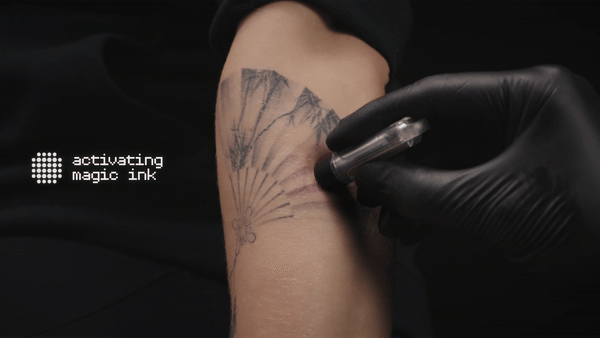
The ink is turned on and off by specific wavelengths of light. "One wavelength of light will activate your tattoo, and that's activated by actually changing the structure of the particle," Bang explains. This is what shows the colour. "Then, if you give it a different wavelength of light or visible field of light, that structure will change again, and it won't show colour." Though it's a little different, Bang says, "[it's] kind of the same idea as a coffee mug that shows a picture when it's hot." (Though that's thermochromic, whereas Magic Ink is photochromic.)
Any form of visible light can activate the tattoo, including the flashlight on your phone, and to reverse the reaction, you use a UV flashlight. These two forms of light can display and hide the ink within seconds. To change the design within your skin, which was another dream of Bang's, the idea is to tattoo a solid area of Magic Ink and use light to activate specific particles.
"We made this thing called the Magic Pen, which is more like a stylus for your skin," Bang says. "It's a very narrow beam of light that you can draw on your skin, and it will only activate wherever particles it exposes to light." With the Sharpie-like light pen, you can create whatever design you want in the patch of Magic Ink. "You can also use stencils and you can stick it right on your skin and put a light across it," Bang says. This means you can change your tattoo as many times as you want.
Is Magic Ink Safe?
Your emotions are probably teetering between amazement and scepticism, which is fair; Bang acknowledges just how unbelievable the entire concept sounds. "My first thought was, 'This is too good to be true. Is it OK? Is it safe?'" And he assures us that it is. The ink has been developed by a team of scientists with doctorates in their respective fields and an advisory medical board. Additionally, New York City dermatologist and dermatopathologist Adarsh Vijay Mudgil, MD, has reviewed the Magic Ink tattoos that have been done over the last two years. According to Bang, "We've done studies where we compare the safety and healing process of Magic to conventional inks, and it performed as well or better than standard tattoo inks."
All of that said, outside of the studies they've done, we don't know exactly how Magic Ink will age because the science is still fairly new. But the team remains optimistic. "It'll take 20 years before we know how it'll degrade, but every pigment will degrade," Bang says.
The Future of Tattooing With Magic Ink
Magic Ink rolls out to the world on Jan. 17, starting at Bang's studio in New York City, where it will be used exclusively for a few months. "Then we will share it with our legacy artist team — some of the most prestigious, most followed, most famous tattoo artists in the country and all over the globe," he says.
Bang is excited to see how Magic Ink is adopted into the world of tattooing but doesn't see it replacing traditional designs. As he puts it, "I really wanted to marry the two. I'm a tattooist; I love tattoos."
